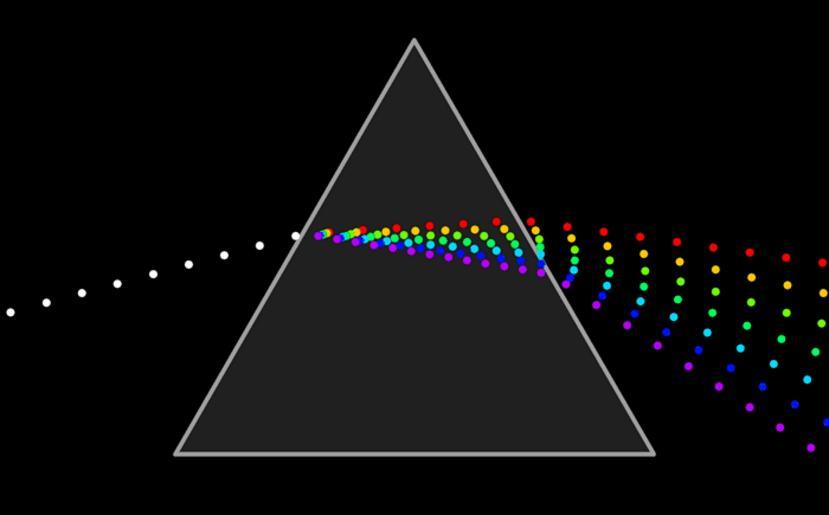MAKE A MEME
View Large Image

| View Original: | Light dispersion conceptual.gif (700x435) | |||
| Download: | Original | Medium | Small | Thumb |
| Courtesy of: | commons.wikimedia.org | More Like This | ||
| Keywords: Light dispersion conceptual.gif Waves thumb right A version with waves is now available Kieff Kieff<sub>Wikipedia</sub> Talk 04 12 24 December 2007 UTC Do not use the version with waves until it is fixed That image shows the red waves propagating faster outside the prism --Srleffler 00 05 17 February 2008 UTC This is now fixed 189 15 89 5 12 49 27 February 2008 UTC Note A new and more accurate version of this image is currently on the way Please be patient I've been busy lately and coding a version with waves is trickier than little balls Kieff Kieff<sub>Wikipedia</sub> Talk 01 48 23 February 2007 UTC dispersion of light as it travels through a triangular prism In vacuum shown in black light of any wavelength will travel at a fixed speed c But light slows down in a different medium such as glass or water and light of shorter wavelengths like <span style font-weight bold; color 9900FF; >indigo</span> will tend to travel slower than light of longer wavelengths like <span style font-weight bold; color FF0000; >red</span> This model attempts to convey this fact and its consequences by idealizing light as small particles travelling in space Of course light is not made of small particles but of electromagnetic waves so keep in mind this conceptual aspect of the image to avoid any misconceptions about the nature of light itself For our purposes however the model will suffice White light represented here by white dots is actually made out of light of several frequencies colors travelling together These basic frequencies of visible light are part of what we call visible spectrum and it is only tiny part of the entire electromagnetic spectrum As white light enters a medium in this case the prism each of its composing wavelengths will travel at a different speed in the new medium and this change in speed is what bends the path in which light is travelling This is the phenomenon we call refraction The ratio between the speed of light in vacuum and the speed of light in a medium is what we call index of refraction and this value is specific for a given wavelength and medium Since light of different wavelengths will change direction by a different amount we will experience a division of white light in its composing spectral colors represented here by colored dots This is what we call dispersion Once the basic frequencies are separated in this animation we can easily see the difference on their speeds Red with a long wavelength passes through almost without any change whereas indigo with short wavelength is left behind by all the other colors However this difference in speed does not hold in vacuum and this can be seen on how all light exiting the prism will once again travel at the constant speed of light in vacuum This is all just an easy way of seeing it so it is important to stress once again the fact that this model is not entirely accurate as light is not made of little round particles and white light can't exist on its own as can be misunderstood from the big white dots ---- Animation der Lichtbrechung in einem Prisma Dispersion in prisms Animations of physics Vacuum diagrams Triangular diagrams | ||||